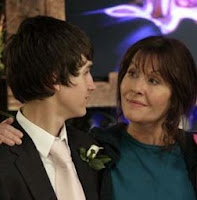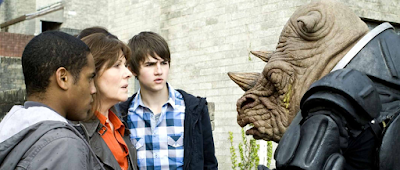. . . a splendid revealer of things not often seen
with the eyes of everyday life.
Last Wednesday (April 22) was Earth Day, an annual event celebrated around the world to show and encourage support for environmental protection. First celebrated in 1970, Earth Day now includes events coordinated globally by the Earth Day Network in more than 193 countries.
To mark Earth Day this year, I spent time after work down by the Mississippi River with my friend Adnan. I'm fortunate to live in a part of south Minneapolis very close to the river. And as you'll see from the images I share in this post, it's a very beautiful area of urban wilderness.
Along with photos taken on Earth Day by the Mississippi, I also include in this post some images from this past Sunday when I visited a friend who lives beside a small lake in Minnetonka. This post's opening image shows reflections of trees in part of this lake.
Speaking of reflections, the title of this post comes from Frank MacEowen's book, The Mist-Filled Path: Celtic Wisdom for Exiles, Wanderers, and Seekers, in particular that part in which he talks about the “Way of the Earth” as an essential component of a true spiritual framework, one rooted in a practical embodied spiritualty and which brings people together in the “awareness that we are all bound together in this holy tapestry of living shapes.”
An excerpt from MacEowen's book is also part of this post. This sharing reflects my growing interest in Celtic spirituality (including Celtic Christianity), which I'm discovering shares many characteristics with other indigenous (i.e., Earth-oriented) spiritual traditions from around the world, most foundationally the experience of a deep, abiding, and transforming connection with nature.
The landscape is a mirror. It is a splendid revealer of things not often seen with the eyes of everyday life. When walking out on the land, it is good to invite the “eyes of the seer” and the "eyes of the poet"“eyes of the poet” to be present. These are eyes that see the true shape of things. Poets and seers see things differently. When we relax the literal thinking mind and enter a landscape with more fluid perceptions (a soft gaze), we soon find that we become changed. We are then able to connect with our primal, preliterate selves. This preliterate, or perhaps postliterate, state of consciousness opens us to the Great Mirror of Nature.
The Great Mirror is that striking feature of Creation that soulfully reflects back to us our own soul when we slow our rhythm and our daily pace down long enough to be recipents of its wisdom.
Through the Celtic practice of merging the human soul with the soul of nature and the soul of place, a deep healing occurs. A profoundly sacred education awaits us all. But, as Quaker educator and philosopher Parker Palmer has said, “Education isn't necessarily a learning, but very often an unlearning of false perceptions or a remembering of what we've forgotten.”
The Celtic path of working with the beauty of Creation is one of dialogue. It is not a one-way conversation. This work is about allowing ourselves to become one-third of the sacred dialogue. We open ourselves to the inherent intelligence of the earth, the earth leans toward us in response, and a third thing is created: a true human being.
Those who follow the Celtic mystical paths have always perceived nature as sacred. There is an unspoken understanding that nature acts as a reflective mirror, shining back our own soul's essence and sometimes even prophetic information. The Great Mirror reminds us of our truest self. For this reason any spiritual work with the natural world, whether prayer, pilgrimage, hillwalking, fasting, or purification practices, is an invitation to return to the primal (meaning “original”) essence of who we really are.
– Frank MacEowen
(From The Mist-Filled Path, pp. 231-232)
(From The Mist-Filled Path, pp. 231-232)
See also the previous Wild Reed posts:
• Thomas Moore on the Circling of Nature as the Best Way to Find Our Substance
• In This In-Between Time
• Mistwalking
• Holy Encounters Where Two Worlds Meet
• The Mysticism of Trees
• Celtic Spirituality: “A Fluid, Transmutable Affair”
• The Prayer Tree
• Australian Sojourn – April-May 2019: On Sacred Ground
• This Holy Trinity
• Earth Day 2015
• Quote of the Day – September 19, 2014
• Earth Day 2013
• Time and the River
• Somewhere In Between
Related Off-site Link:
Bill McKibben on Earth Day at 50: We Must Stop Subsidizing Fossil Fuel Industry Wrecking the Planet – Democracy Now! (April 22, 2020).
Images: Michael J. Bayly and Adnan.








































































